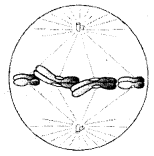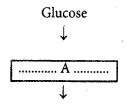Kerala Plus One Botany Previous Year Question Paper March 2017 with Answers
| Board | SCERT |
| Class | Plus One |
| Subject | Botany |
| Category | Plus One Previous Year Question Papers |
Time: 1 Hour
Cool off time: 10 Minutes
General Instructions to candidates
- There is a ‘cool off-time’ of 10 minutes each for Botany and Zoology in addition to the writing time ‘ of 1 hour each. Further, there is a ‘ 5 minutes’ ‘preparatory time’ at the end of the Botany Examination and before the commencement of the Zoology Examination.
- Use the ‘cool off time’ to get familiar with the questions and to plan your answers.
- Read the instructions carefully.
- Read questions carefully before you answering.
- Calculations, figures and graphs should be shown in the answer sheet itself.
- Malayalam version of the questions is also provided.
- Give equations wherever necessary.
- Electronic devices except non-programmable calculators are not allowed in the Examination Hall.
Question 1.
Who among the following scientists is related to the identification of cytokinins?
a. E. Kurosawa
b. F. Skoog
c. C.Darwin
d. F. W. Went
Question 2.
Read the following statements and select the correct statements from the given choices.
i. Methanogens are present in the guts of ruminant animals
ii. Mycoplasma has a distinct cell wall.
iii. Viroids are infectious naked DNA molecules.
iv. Algal component of lichen is phycobiont.
a. ii and iii
b. i and iv
c. i and iii
d. ii and iv.
Question 3.
Algae are useful to man in a variety of ways.
Suggest any four uses of algae.
Question 4.
The root nodules of leguminous plants contain two necessary biochemical compounds for N2 fixation. Identify these compounds.
Question 5.
An important difference between C3 and C4 plants is photorespiration. Explain how photorespiration occurs in C3 plants.
Question 6.
Write any four agricultural applications of ethylene.
Question 7.
Define Blackman’s law of limiting factors and identify any two important factors which influence the rate of photosynthesis in plants.
Question 8.
The movement of water through the root layers is ultimately symplastic in the endodermis. Give a reason.
Question 9.
a. The arrangement of flowers on the floral axis is called ……
i. Aestivation
ii. Phyllotaxy
iii. Placentation
iv. Inflorescence
b. How can you differentiate an actinomorphic flower from a zygomorphic flower?
Question 10.
a. The tissues involves in the secondary growth of dicot plants are vascular cambium and …….
b. Compare the formation of vascular cambia in the dicot stem and dicot root.
Question 11.
a. Identify a cell organelle which contains hydrolytic enzymes.
b. Rough Endoplasmic Reticulum (RER) and Smooth Endoplasmic Reticulum (SER) are morphologically and functionally different. Justify this statement.
Question 12.
Given below is the metaphase of mitosis. Analyze the diagram and draw a sketch of anaphase. Write any two events of anaphase.

Question 13.
Glycolysis is the partial oxidation of glucose to produce two molecules of pyruvic acid.
a. Where does glycolysis occur?
b. Steps of glycolysis are given below. Fill up the blank boxes.


OR
The complete oxidation of pyruvic acid yields three molecules of CO2 by a cyclic process in the matrix of mitochondria.
a. Who first develop this cycle?
b. Draw a diagrammatic sketch of the identified cycle.
